Edinburgh Royal Mile is one of Scotland's most famous and historic streets. The mile-long stretch starts at Edinburgh Castle, which sits atop an extinct volcano and runs down to the Palace of Holyroodhouse, the official residence of the King in Scotland.
This bustling thoroughfare is packed with history, culture, and stunning architecture, making it a must-see destination for anyone visiting Edinburgh. Join us as we discover more about this ancient thoroughfare.
History of the Royal Mile
The Royal Mile comprises several streets - Esplanade, Castle Hill, Lawnmarket, Parliament Square, High Street and Canongate.
The history of the Royal Mile dates back to the 12th century when Edinburgh was a small town surrounding the castle. The road that connected the castle to the town became known as the High Street.
Over the years, Edinburgh grew and expanded, and the High Street became a bustling commercial centre. The Street was lined with shops, taverns, and other businesses, and it became a hub of activity for city residents.
Scotland's Capital
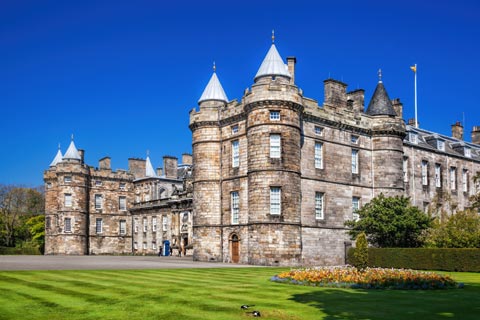
Edinburgh officially became the capital of Scotland in 1437 after King Robert the Bruce granted the community town status. The Street became known as The Royal Mile as it became a processional route between Edinburgh Castle and Holyrood Palace.
Many important buildings were constructed along the mile, including St. Giles Cathedral, the High Kirk of Edinburgh.
The Royal Mile has played witness to many significant events in Scottish history. In 1566, Mary, Queen of Scots, gave birth to her son James VI in Edinburgh Castle. The Scottish Parliament sat in Parliament House until the Treaty of Union in 1707.
Today, the Royal Mile is still a bustling centre of activity in Edinburgh. It is home to many independent retailers, coffee shops, restaurants, and tourist attractions. It remains an integral part of the city's history and culture.
Royal Mile Attractions
Here are some of the top attractions on Edinburgh's Royal Mile:
Edinburgh Castle: This iconic fortress sits atop Castle Rock and is Scotland's most visited tourist attraction. It's home to the Scottish Crown Jewels, the One O'Clock Gun, and the National War Museum of Scotland. The Castle Esplanade is the setting for the famous Royal Edinburgh Military Tattoo.
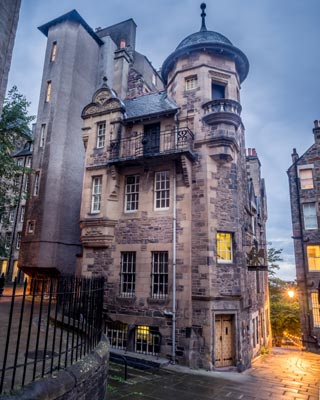
St Giles' Cathedral: This stunning medieval church is the mother church of Presbyterianism and is known for its striking Gothic architecture and intricate stained glass windows. The late Queen Elizabeth II laid at rest in St Giles for 24 hours during her final journey from Balmoral Castle to London.
The Real Mary King's Close: This underground attraction allows visitors to explore the hidden streets and alleyways beneath the Royal Mile and learn about Edinburgh's dark and fascinating history.
The Scotch Whisky Experience: This interactive attraction offers visitors a chance to learn about the history and production of Scotland's national drink and even includes a tasting session.
The Palace of Holyroodhouse: This royal residence is the official residence of the British monarch in Scotland and is open to the public. Visitors can tour the State Apartments and see where Mary, Queen of Scots lived.
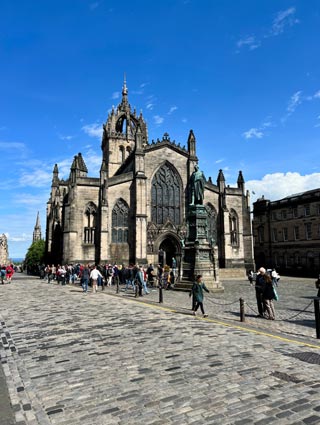
The Museum of Edinburgh: This museum tells the story of Edinburgh's history and features exhibits on everything from the city's medieval past to its role in the Scottish Enlightenment.
The Writers' Museum: This museum is dedicated to three of Scotland's most famous writers: Robert Burns, Sir Walter Scott, and Robert Louis Stevenson.
The Canongate Tolbooth: This historic building was once a courthouse and prison and now houses the People's Story Museum, which tells the stories of ordinary Edinburgh residents throughout the centuries.
John Knox House: This 16th-century house is the only surviving example of a building associated with the Scottish Reformation and is now a museum dedicated to the life and work of the reformer John Knox.
The Scottish Parliament: The Scottish Parliament building sits at the foot of the Royal Mile and is open to the public for tours. Visitors can learn about the workings of the Scottish government and see the building's unique and controversial modern architecture.
Pubs in Royal Mile Edinburgh
Edinburgh's Royal Mile is also known for its lively pub scene. Here are some pubs on the Royal Mile that are worth checking out:
The World's End: This popular pub is located at the foot of the Royal Mile and is known for its wide selection of craft beers and pub grub.
Deacon Brodie's Tavern: This historic pub is named after the notorious Deacon Brodie, a respected businessman by day and a thief by night. The pub has a traditional Scottish atmosphere and offers live music on the weekends.

The Royal Mile Tavern: This cosy pub offers a great selection of Scottish whiskies and traditional pub fare.
The Mitre Bar: This traditional pub has existed since the 19th century and is known for its real ales and friendly atmosphere. It's also located in a historical building once home to the notorious Hellfire Club.
The Bow Bar: This small pub has a great selection of Scottish beers and whiskies, a cosy atmosphere, and friendly staff. It's a popular spot for locals and visitors alike.
The Albanach: This pub is a great spot to try a variety of Scottish beers and whiskies, as well as traditional Scottish dishes like haggis and Cullen Skink. It's also located in a historic building that dates back to the 16th century.
The White Hart Inn: This historic pub claims to be the oldest in Edinburgh, dating back to 1516. It's located near the top of the Royal Mile and has a traditional Scottish atmosphere, with exposed stone walls and wooden beams.
Closes of Edinburgh
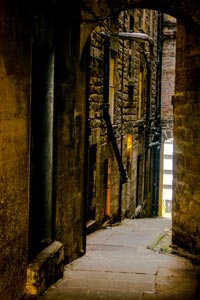
The Edinburgh "closes" and "wynds" refer to the narrow alleys and lanes that run between the historic buildings in the city's Old Town. They are essential to Edinburgh's architectural and cultural heritage and offer visitors a glimpse into the city's past.
Many of these alleyways date back to medieval times, and they were once the main thoroughfares of the city.
A Close is an entry to a tenement - at one time, there would have been a gate at the front entrance that would have been closed at night. A Wynd is a thoroughfare which is open from end to end and would have been wide enough to accommodate a horse and cart.
Mary King’s Close
Mary King's Close is a historic close located in Edinburgh, Scotland. It is named after Mary King, who was a prominent figure in the close during the 17th century. Today, Mary King's Close is a popular tourist attraction that offers a glimpse into what life was like in Edinburgh during the 16th and 17th centuries.
Mary King's Close is a narrow alleyway once part of Edinburgh's old town. It was originally a bustling street that was home to many merchants and craftsmen. However, as the city grew, the close became overcrowded and unsanitary. Many of the buildings were demolished, and the close was eventually covered up and forgotten.
Rediscovered
In the 1990s, Mary King's Close was rediscovered during the construction of a new building. The close was remarkably well-preserved, with many original buildings and features still intact. Today, visitors can take a guided tour of the close and learn about the lives of the citizens who once lived and worked there.
Visiting Mary King’s Close
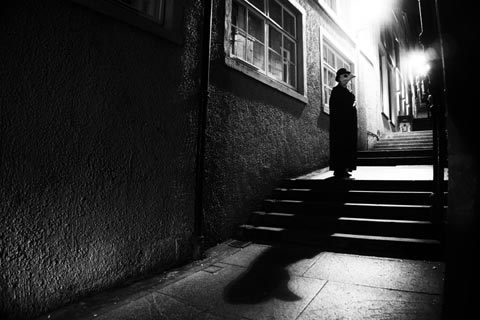
Visitors will see various rooms and spaces during the tour, including homes, shops, and even a tavern. One of the most exciting features of Mary King's Close is how it was constructed. Because the close was so narrow, buildings were often built on top of each other, with upper floors overhanging the Street below. This created a unique and unusual architectural style that is still visible today.
Another interesting aspect of Mary King's Close is its connection to the plague. During the 17th century, the bubonic plague hit the close hard, which killed many residents. Some people believe that the close was walled up and left abandoned during this time, with the bodies of the dead left inside. While this theory has been debunked, the plague did significantly impact the close, and visitors can learn about how it affected the lives of the people who lived there.
Unesco World Heritage Site Edinburgh
Edinburgh's Old Town is a UNESCO World Heritage Site renowned for its historic buildings and rich cultural heritage. The Old Town is one of the best-preserved medieval townscapes in the world, with a wealth of architectural and historical features that make it a fascinating destination for visitors to Scotland.
The Old Town is situated on a rocky ridge overlooking the city of Edinburgh, and it is surrounded by defensive walls that date back to the 16th century. The buildings in the Old Town range in age from the 14th to the 17th centuries, and many of them feature stunning Gothic and Renaissance architecture.
Edinburgh Castle – Defender of the Nation

One of the most notable buildings in the Old Town is Edinburgh Castle, which sits at the top of the ridge and offers stunning views of the city below.
The castle has a rich history that dates back to the 12th century and has played an important role in Scottish history for centuries.
Discover more about Edinburgh Castle by reading our informative blog.
Overall, the Old Town of Edinburgh is a fascinating destination rich in history, culture, and architectural heritage. Its status as a UNESCO World Heritage Site is well-deserved and a must-visit destination for anyone interested in Scottish history and culture.
Explore Edinburgh with Scottish Tours
Uncover Edinburgh's fascinating history with Scottish Tours. Walk the cobbled streets of the Royal Mile, explore ancient Edinburgh Castle and discover the hidden treasures of the Old Town.
Book one of our amazing tours, and let us introduce you to the real Scotland.
Browse our tours and book today.

